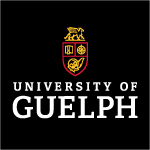For the most comprehensive information on measles (which is experiencing a resurgence in outbreaks in parts of the US and Canada), please see (Ontario) https://www.publichealthontario.ca/en/Diseases-and-Conditions/Infectious-Diseases/Vaccine-Preventable-Diseases/Measles
Below we provide a dashboard to illustrate to the public the possible evolutions of measles outbreaks for the population of 0-9 years old in the Wellington-Dufferin-Guelph PH (which encompasses approximately 33,500 kids, attendince daycare and school on a regular basis).
The dashboard allows for customization of “Contact Rate” between kids in this age range and assume a 0.9 probablility of transmission from an infected individual to a susceptible one per contact (measles has an estimated initial reproduction number of 8-12).
It assumes that the overall coverage in the children population is 0.9 with a vaccine efficacy (typically MMR-type) of 0.95%.
It assumes that “Contact Tracing” takes place once an infected case in the community is identified – tracing of exposed individuals is important, as unvaccinated exposed can be offered vaccination post-exposure up to 6 days. It is known that teh vaccine efficacy in these cases varies, depending on the number of days since exposure and the type of vaccine (MMR dose 1 is given within 3 days of exposure (efficacy 92%-95%), IG PEP is given within 6 days of exposure(efficacy 65%-90%)). Here we represented as “Vaccine Efficacy post-Exposure”.
It assumes that all traced individuals post-exposure will agree to isolate (L) or isolate and vaccinate post-exposure (VL); It further assumes that non-traced individuals become infected and (given the weight times for family doctors and shortages in primary care coverage) there will be a variable “Isolation post-symptoms” for each infected child.
It assume the recovery period is 7-10 days.



